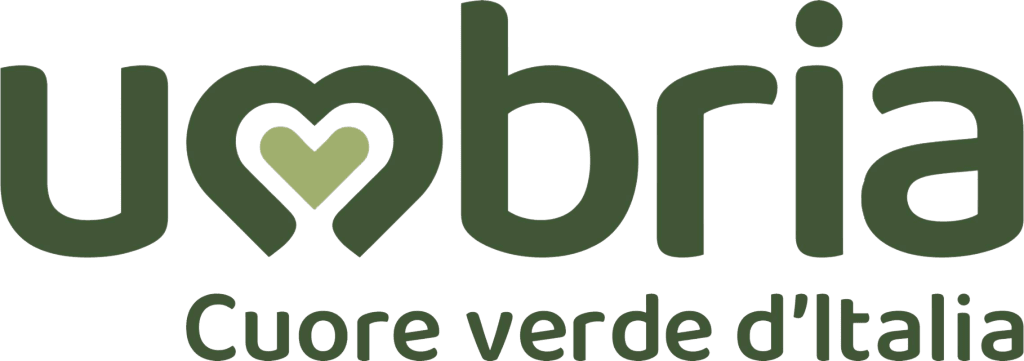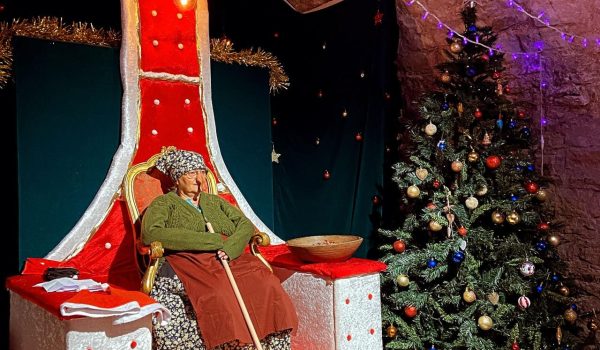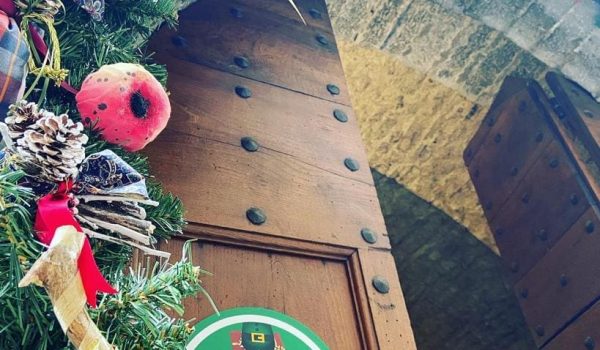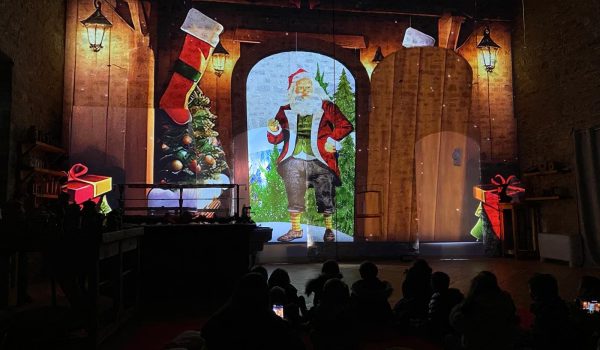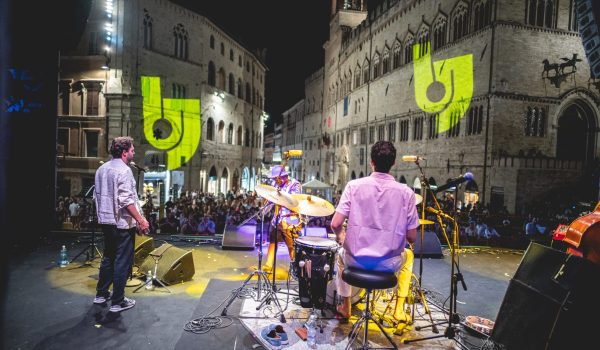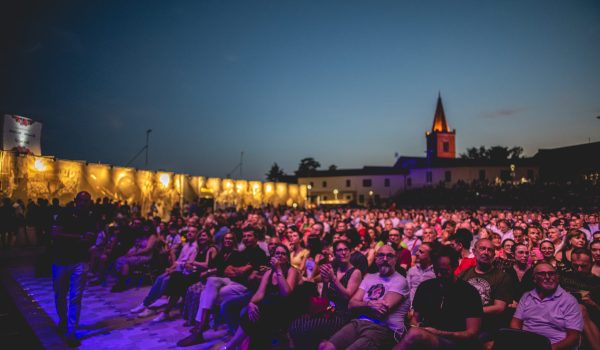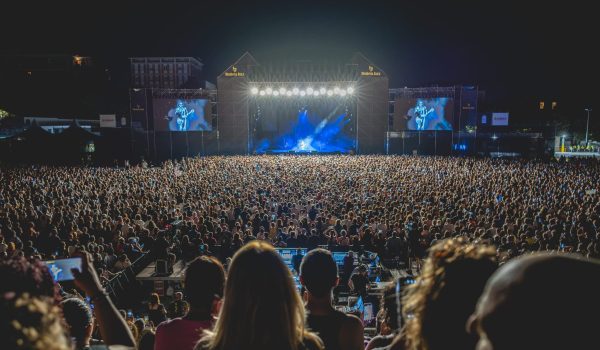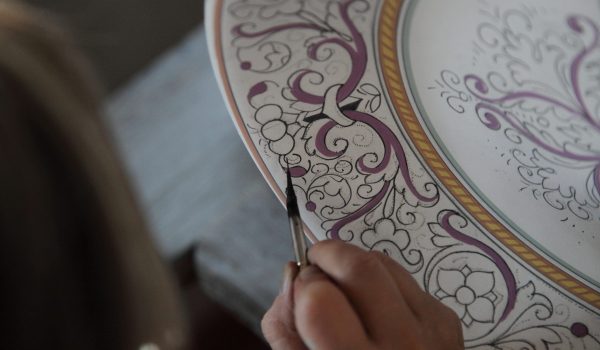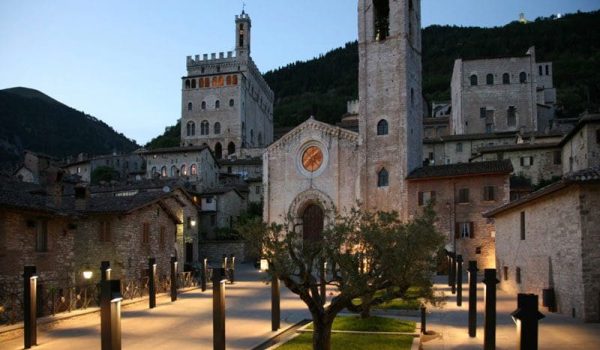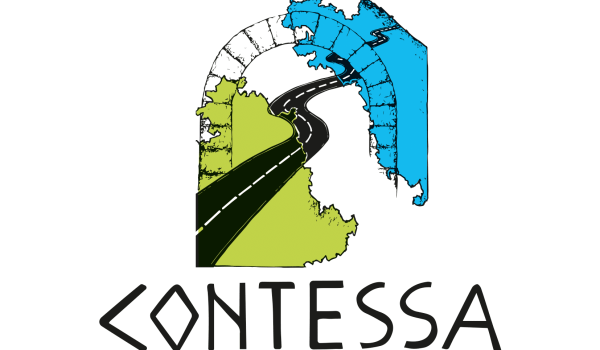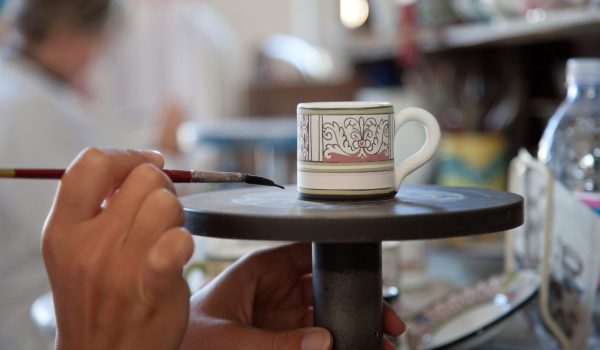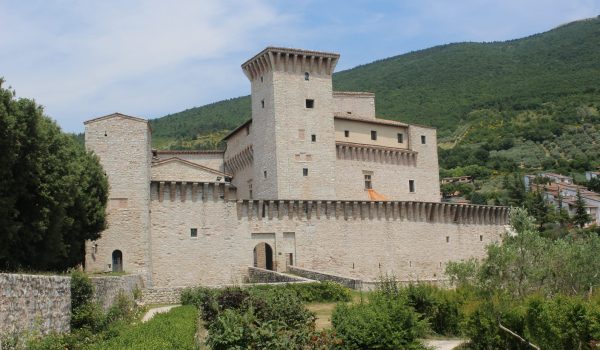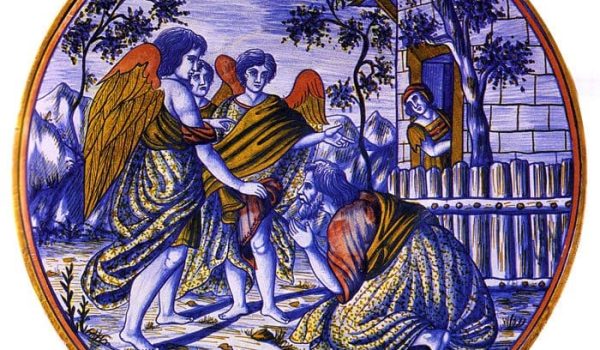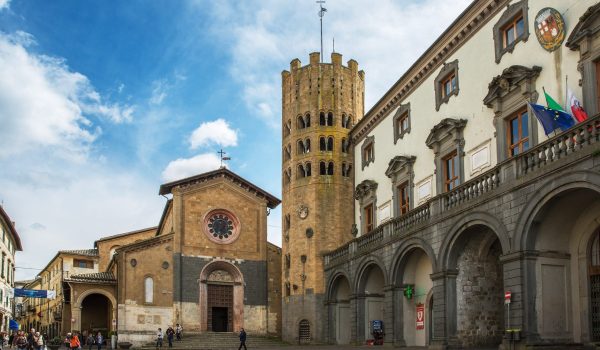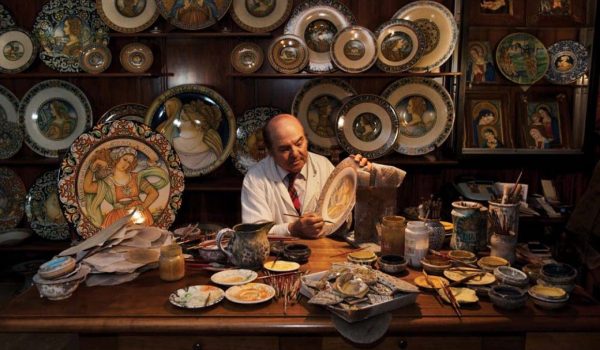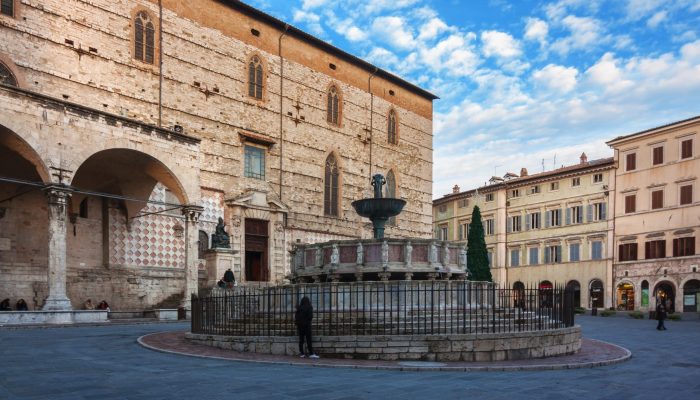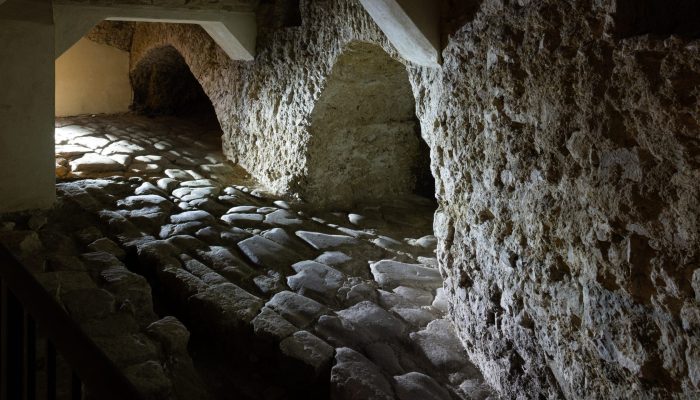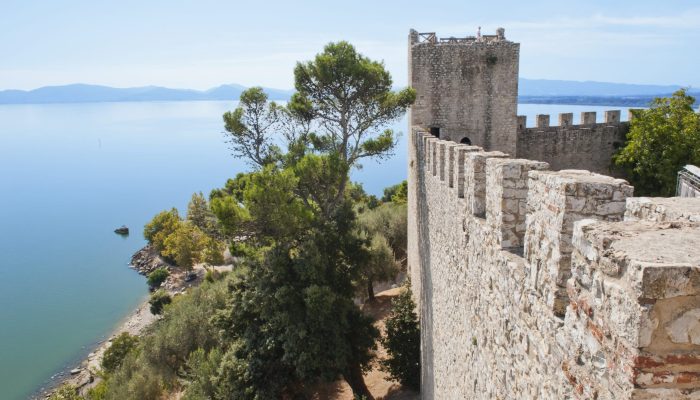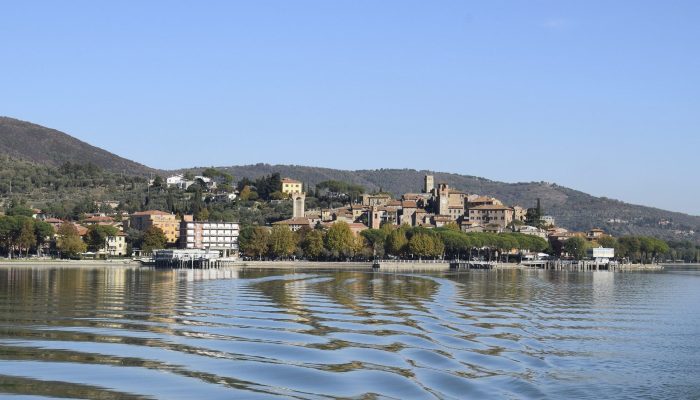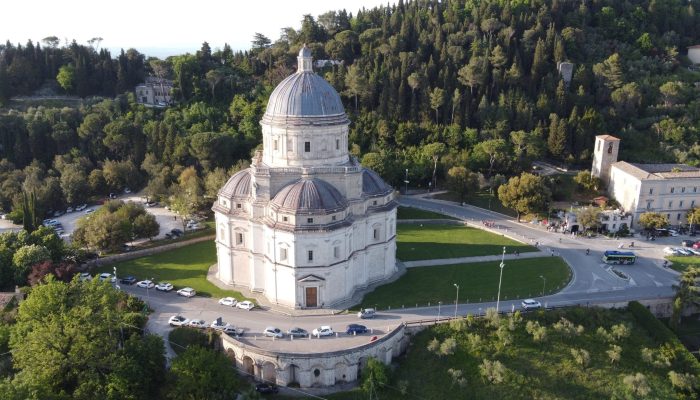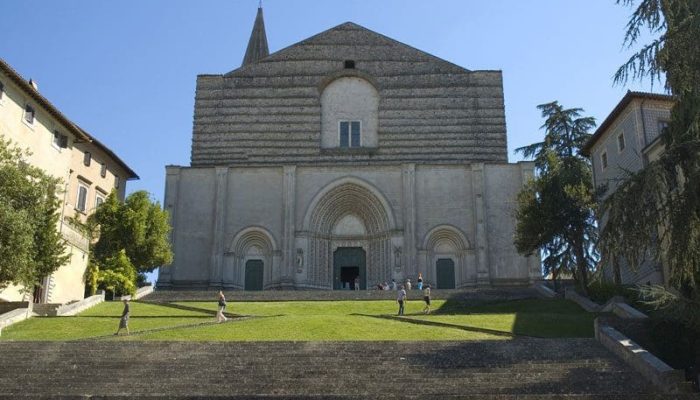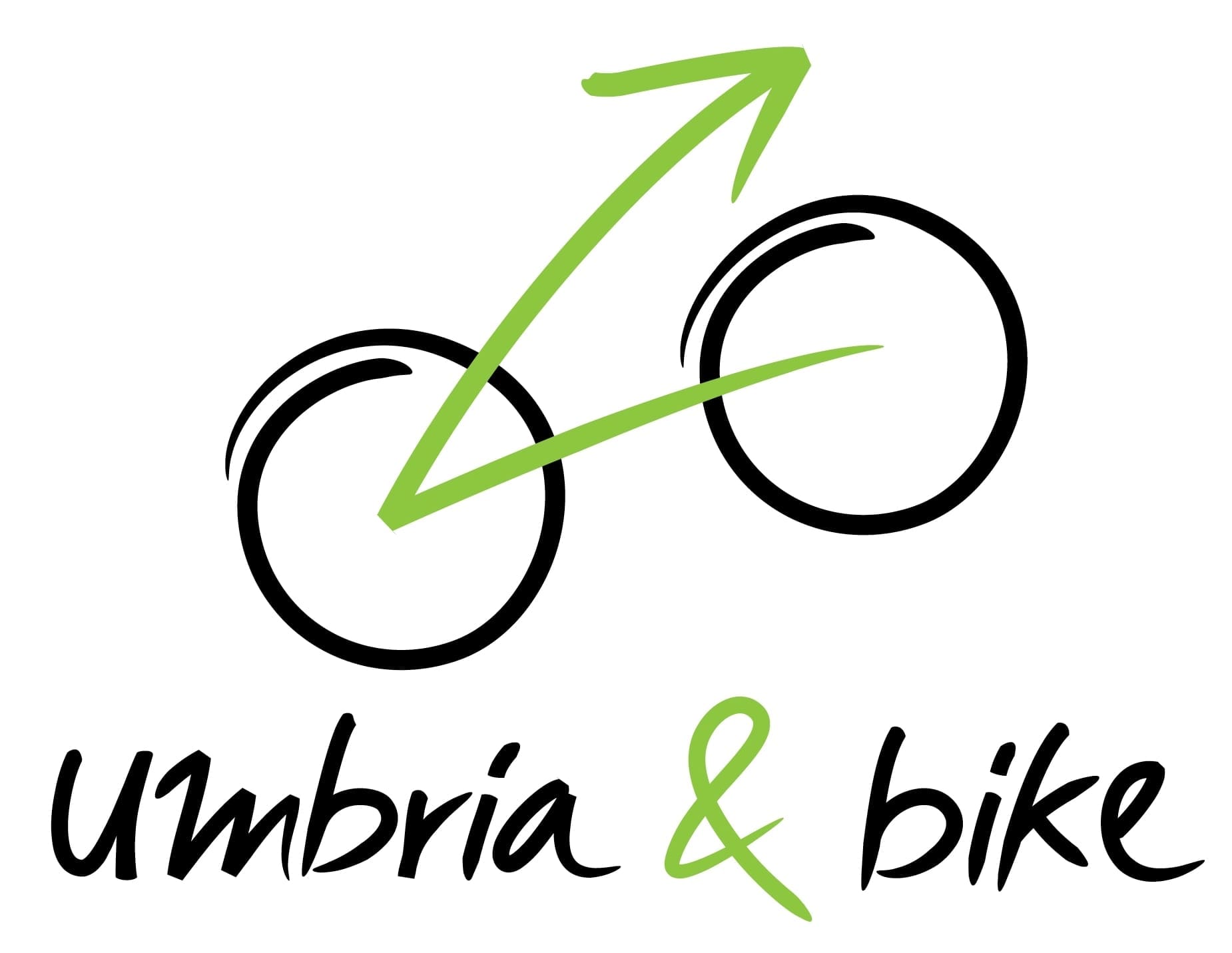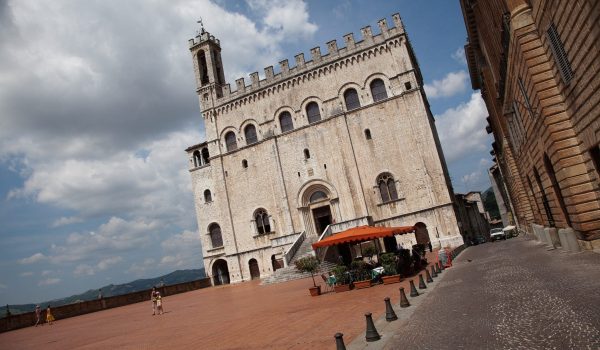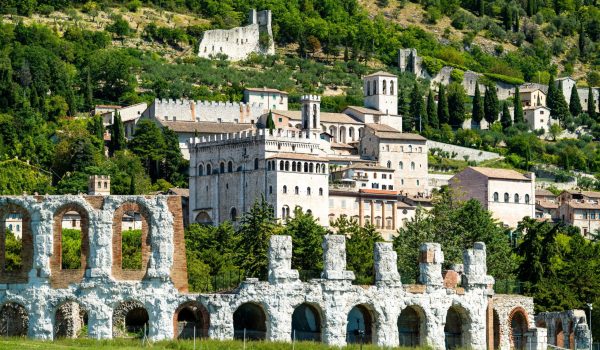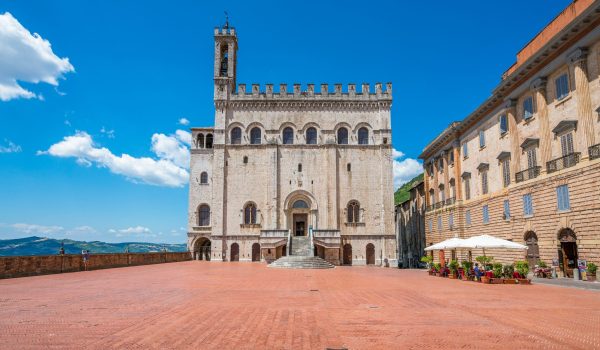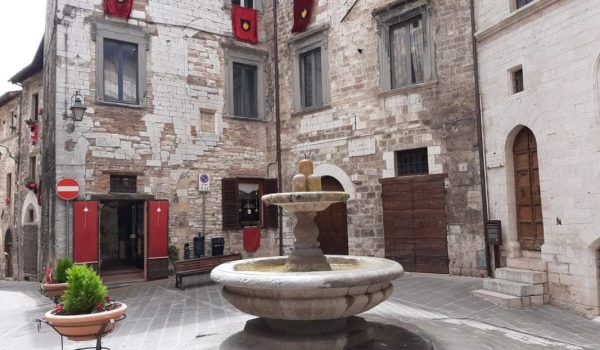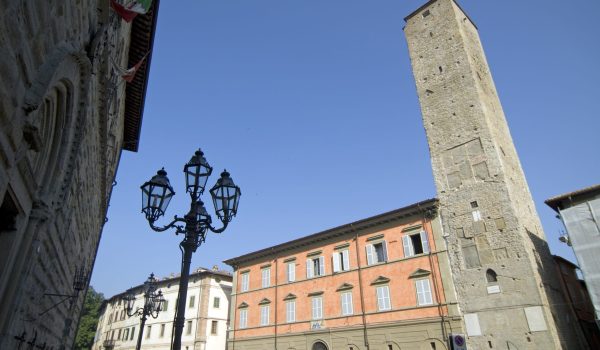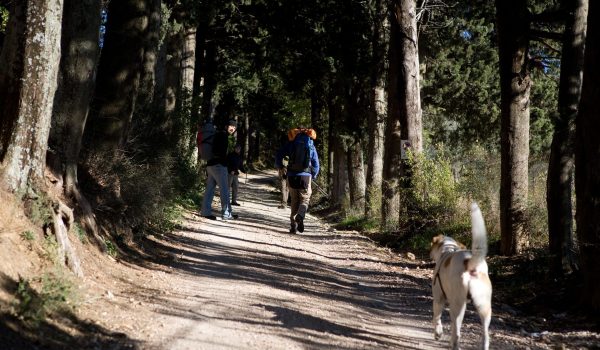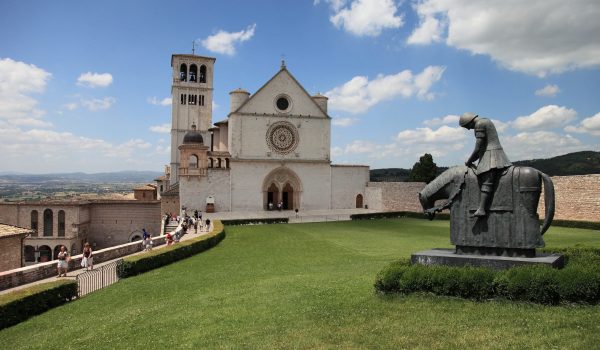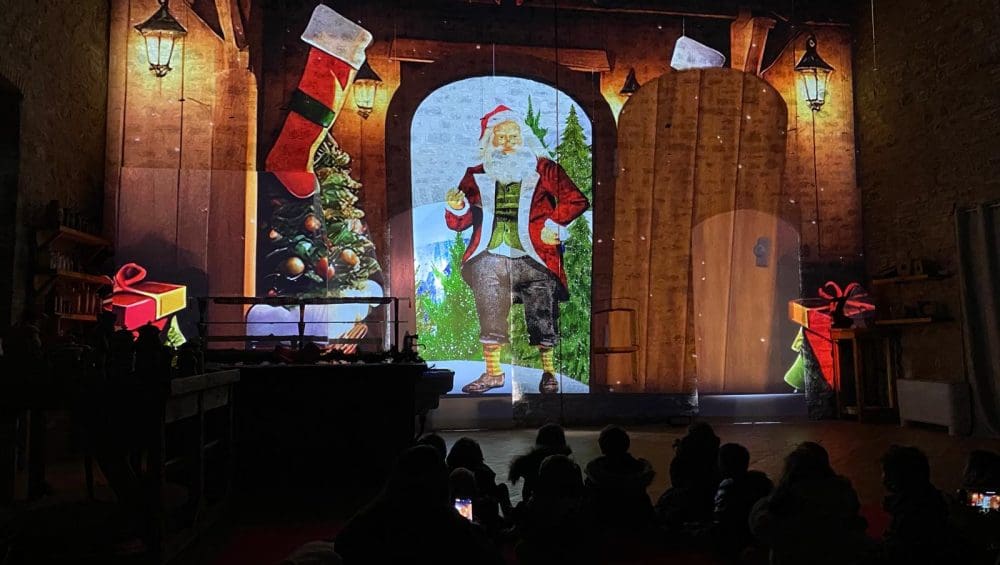


Christmasland Gubbio Christmas 2025
Promo!!!
A unique experience to enjoy a mini vacation on the occasion of Umbria Jazz and the Lionel Richie concert.
Discover with us our Concert + Stay promo
Promo Euro 275.00 per person
The price per person in a double room includes:
- One night’s in a double/twin room
- accommodation in 4 stars hotel closest to the center of Perugia
- Rich breakfast
- Concert included
- Europ Assistance Travel Insurance
The fee does not include
- Extras and personal tips
- Tourist tax where applicable to be paid in cash
- Anything not indicated under “The fee includes”
Travel Conditions
Upon confirmation of availability, a deposit of 30% of the package will be required.
The balance must be paid within 30 days of the arrival date.
Europ Assistance insurance coverage will be formalized upon payment of the balance.
Any cancellations must be communicated via email to info@umbriasi.it
For cancellations after the balance has been paid up to the arrival date, late arrival and/or early departure, no show (i.e. no presentation), the total amount of the practice will be required.
Europ Assistance insurance coverage can be activated (for the cases envisaged by the coverage) which will be formalized upon payment of the balance.
Book now and pay later!
Mappa
Gallery
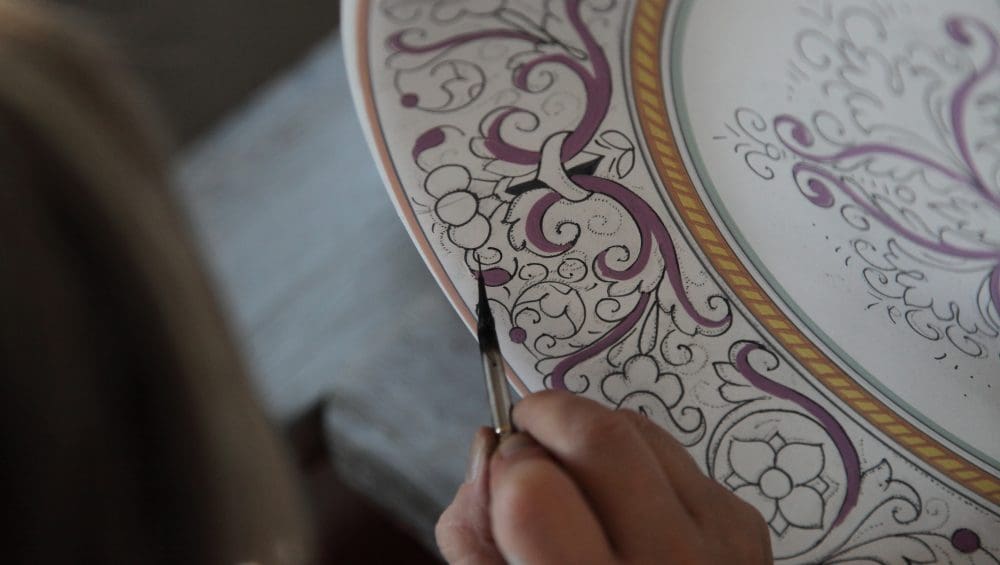
On the Path of Ceramics
On the Path of Ceramics
Starting from Euro 195,00 per person
If during your travels and holidays in Umbria you are not satisfied with seeing but want to deepen, understand and know, you can let yourself be fascinated by the mastery of skilled craftsmen who have handed down precious knowledge in their workshops for generations by working the ceramic.
1st day
Arrival in the early afternoon. Deruta, the city par excellence of artistic majolica, among the most appreciated and known in the world. The “Raphaelesque” decoration characterizes all the production: they are fast interweaving of leaves, birds and other animals with Moorish motifs, and the prevailing colors of this type of ceramic are intense cobalt blue and yellow on white enamel which embellishes the whole. Particularly in the former convent of San Francesco, it is worth visiting the Regional Museum of Ceramics, which documents centuries of this activity.
Followed by a visit to an artisan workshop.
Accommodation in the structure and overnight.
2nd day
After breakfast moving to Gubbio.
The fame of Gubbio ceramics is linked to the name of Mastro Giorgio, whose original majolica with ruby and pale gold reflections are still today the object of study by artists from all over the world. This type of processing is accompanied by the processing of the famous black and shiny vases called buccheri, which repeat the shapes and friezes of the very ancient original Etruscan models.
Sightseeing tour with the Gubbio Express.
Free lunch
In the afternoon we move to Gualdo Tadino, a place where the production of ceramics had already started in the distant fourteenth century and which saw a rediscovery at the end of the nineteenth century by Paolo Rubboli of the ruby gold luster, according to the Arab formula described by Cipriano Piccolpasso, a renewed artistic season opens for Gualdo ceramics. Entrance to Rocca Flea
Overnight.
3rd day
After breakfast, the journey to Orvieto ends. Over the centuries, traces of the ancient activity had been lost, until the beginning of the twentieth century, when the rediscovery of finds dating back to the Middle Ages reawakened the impulse to a rich and flourishing production. Orvieto Carta Unica will be made available for visiting the main monuments.
Our best offer is starting from € 195,00 per person
The fee is per person and includes:
- 2 nights in a double/twin room with breakfast
- Admission to the Regional Museum of Ceramics
- Visit to an artisan workshop in Deruta
- Sightseeing tour with the Gubbio Express
- Entrance to Rocca Flea
- Orvieto Carta Unica
- Europ Assistance insurance
The fee does not include:
- Extras, tips and offers
- Means of transport
- City tax where introduced by the Municipality of reference
- Anything not expressly indicated in “the rate includes”
Ask for information
Gallery
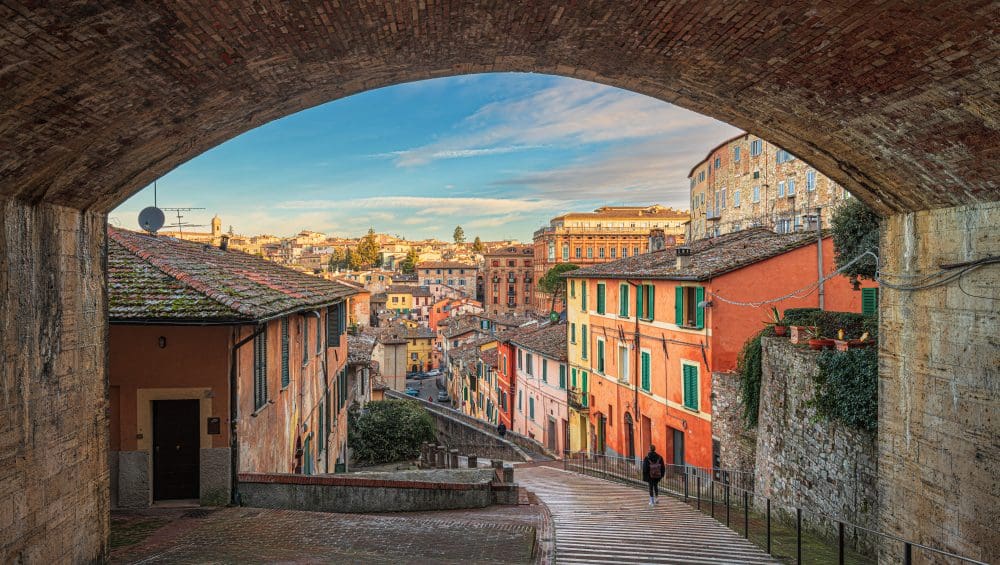
Umbria a heart of chocolate
Umbria a heart of chocolate
Starting from Euro 325,00 per person
Day 1
Arrival in Perugia made famous throughout the world by Perugina and its excellent chocolate.
In the afternoon, the walk in the historic center includes entry to Perugia Sotterranea, a real leap back in time under the cathedral of San Lorenzo.
Before going to the structure, a pleasant stop in a chocolate shop in the historic center for a tasting.
Accommodation in a structure for the overnight stay
2nd Day
After breakfast we move towards our Lake Trasimeno that seen from space the astronaut Parmitano said “It looks like a heart”. Walk to Passignano sul Trasimeno, a small tourist pearl of the lake, where it will be possible to take the ferry to reach Isola Maggiore, the only inhabited island, with a small museum circuit.
Lunch in Isola Maggiore
Free dinner and overnight stay
3rd Day
After breakfast, on the way back to your destination, you can stop for a walk in Todi a medieval city named the “most liveable city in the world”.
Tasting with snack in the Cellar.
Our best is starting from Euro 325.00 per person
The rate is per person in a double room and includes:- 2 nights accommodation with breakfast
- Entrance to Perugia Sotterranea
- Chocolate tasting in Perugia
- Daily excursion to Isola Maggiore from Passignano sul Trasimeno (return boat ticket, museum circuit, lunch)
- Wine tastings in a cellar with snack in Todi
- Europ Assistance travel insurance
- Extras, tips and offers
- Means of transport
- City tax where introduced by the relevant Municipality
- Anything not expressly indicated in the “the rate includes” section
Ask for information
Gallery
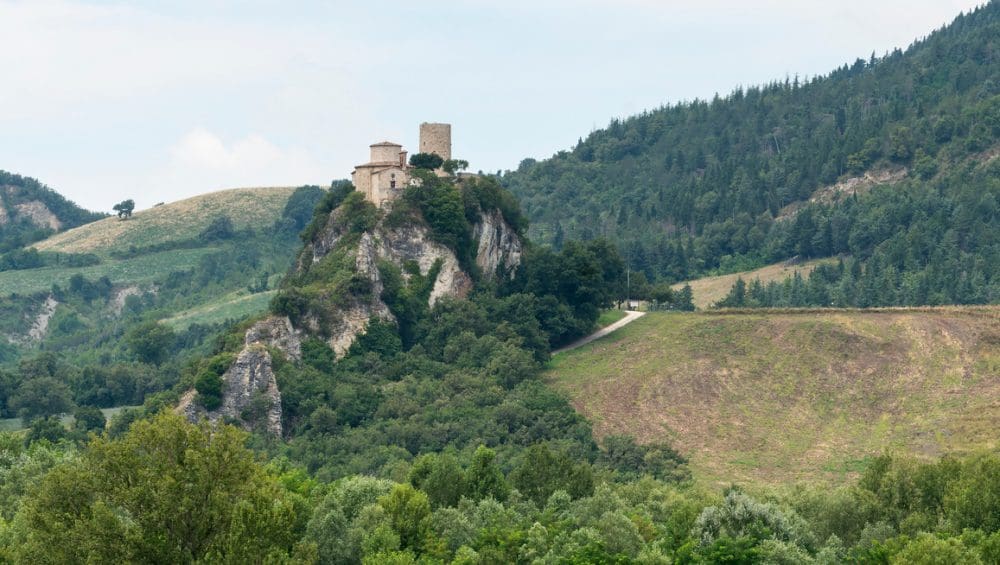
Federico da Montefeltro by bike
Federico da Montefeltro by bike
Gubbio-Urbino
Duration: MTB 4.40 h E-MTB 3.36 h
Distance: 61.7 km
Difference in altitude: 1,280+
Points of interest: Gubbio, Cantiano, Cagli, Fermignano, Metauro waterfall, Urbino.
A 75 km itinerary that separates the ducal city from the birthplace of Federico da Montefeltro.
It is an itinerary rich in art and culture on one side and wonderful natural landscapes on the other, the one that connects Gubbio to Urbino.
The route develops largely on panoramic and low-traffic roads, immersed in the charming Umbria-Marche countryside, touching the places where Federico da Montefeltro, one of the most famous figures of the Renaissance, had a strong influence.
Departure from Gubbio, the birthplace of Federico da Montefeltro.
Federico’s affection and the greatest intensity of his feelings went to Gubbio, as he wrote in 1446: «because we can assure you that there is all our heart and all our soul».
It is here that he built his palace as the second seat of the duchy and the second capital rich in pre-Roman and classical vestiges.
We go up towards Urbino, along the old Contessa road, crossing the ancient borders of the state of Feltre, Cantiano and Cagli where the Duke was Lord by birth with titles obtained from his father through
the papal investiture in 1424 AD.
In Cagli, the Torrione is all that remains of the ancient fortress, designed by Francesco Di Giorgio Martini, which was part of a defense plan desired by Duke Federico da Montefeltro.
Having abandoned its defense function, the Torrione today is not only a beautiful historical monument, but also the headquarters of the Contemporary Sculpture Center. The rooms host works by internationally renowned artists,
such as Mattiacci, Kounellis, Nagasawa, Icaro and many others. Their sculptures rest on an unprecedented and original scenography, harmonizing with stone and bricks, creating an incredibly suggestive effect.
Fermignano is a small town of Roman origin that stands on the left bank of the Metauro river, with all around the soft and hilly landscape typical of Montefeltro.
After about 60 km the arrival in Urbino, the city declared a UNESCO World Heritage Site, cradle of the Italian Renaissance and city of Raphael. Urbino is the pearl of the Marche also known as the “ideal city” because of
the painting of the same name preserved in the Palazzo Ducale, one of the most beautiful works of the Renaissance and the beating heart of the city of Urbino in which some of the greatest architects, painters, sculptors and
workers called by Federico from many parts of Italy and Europe participated.
Urbino is the perfect representation of a classic Italian village: the crisscrossing alleys, the delicious smell at every corner, the magnificent panorama that surrounds the town and then… so much art!
Gallery
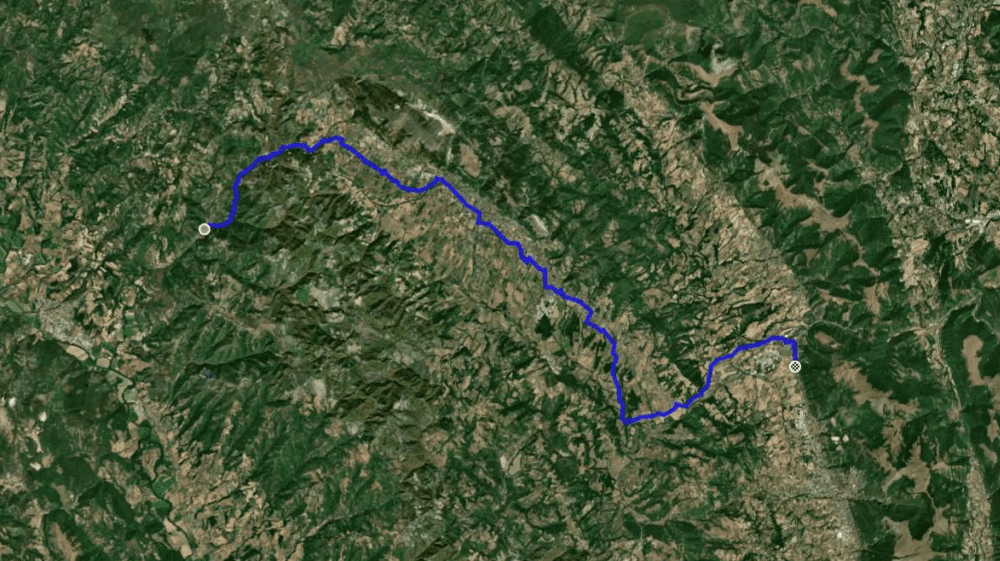
Ex railway from Camporeggiano to Fossato di Vico
Ex railway from Camporeggiano to Fossato di Vico
Points of interest visited
Gubbio
It is known as the “city of stone” and stands on the side of Mount Ingino: Gubbio will captivate you at first sight with its medieval charm to be discovered in its labyrinth of alleys and streets. The origins of Gubbio are rooted in the ancient Umbrian civilization, as evidenced by the so-called Eugubine Tablets written in the Umbrian language and dating back to the 3rd-1st century BC. You can admire them in the rooms of the Civic Museum in Palazzo dei Consoli. Gubbio’s golden age began around the year 1000, at the era of the Communes. Under the leadership of Bishop Ubaldo, in 1100, the city won a war against Perugia. In the meantime, arts and crafts spread, including the processing of majolica. In 1300 the city took on the form it still has today. Some of Gubbio’s most beautiful buildings date back to that period. A walk in the center Start your tour from Gubbio’s jewel, Piazza Grande or Piazza della Signoria, a “hanging” square that overlooks the city. On its sides are the city’s public buildings: the Gothic-style Palazzo dei Consoli and the Palazzo Pretorio, one in front of the other. Also take a look at the Palazzo Ranghiasci Brancaleoni, which is located in the same square. A stone’s throw away is the Renaissance-style Palazzo Ducale. From the gardens of Palazzo Ducale you have a beautiful view of the city. Pay attention to the tall, narrow door to the side of the large door: it is the Porta del morto. According to legend, the coffins of the deceased passed through here. Along the walls, which are located just above the palace and date back to 1200, there are six doors, some of which are still decorated with paintings and city coats of arms. Among the churches, you shouldn’t miss the cathedral of Saints Mariano and Giacomo. Also worth a visit is the church of San Francesco, built on the land of the ancient Spadalonga family who welcomed him after leaving his father’s house and all his belongings. It is located at the foot of the city, where the market was held in the Middle Ages and where the very long Loggia dei Tiratori, built in 1600 by the weavers’ guild, still stands. Here they hung the newly woven woolen cloths. The real wonder of Gubbio, however, is the Fontana dei Matti in front of the Bargello palace. Anyone can get a crazy license by walking three laps around the fountain and getting wet in the presence of a Gubbio resident who certifies it. Where to go in the surrounding area Just leave the medieval walls of Gubbio and another world of surprises opens up to discover: the Roman theater, the nearby Roman mausoleum, the Abbey of San Secondo, the seventeenth-century Madonna del Prato rich in stucco and the church of Vittorina built right where, according to legend, Saint Francis met the wolf.The Bottaccione Gorge
Near Gubbio are the Bottaccione Gorges, ideal for a trip just outside the city. It is a deep gorge due to the erosion of the Carmignano stream, but it is also very rich in historical evidence. Here there is an aqueduct that runs along the gorge and dates back to the Middle Ages. In the gorge there is also the Monastery of Sant’Ambrogio, which stands near a prehistoric citadel dating back to the Paleolithic. The hermitage dates back to 1300 and was known for its strict rules as well as for its inaccessible position that guaranteed silence and solitude. Don’t miss the visit, starting from the underground caves and ending with the frescoes of the churchAt the top of Mount Ingino: the Basilica of Sant’Ubaldo
The Basilica of Sant’Ubaldo is located right at the top of the mountain that watches over Gubbio, but don’t worry, if you don’t feel like hiking you can reach it with a comfortable cable car and you will have the whole city at your feet. Here the urn with the body of Sant’Ubaldo, patron saint of Gubbio is kept. And the famous race of the Festa dei Ceri on May 15th also arrives here. The church is of medieval origins, but during the 1500s it was expanded with the addition of the convent and the cloister. Don’t be fooled by the simplicity of the exterior, go inside to admire the richness of the five naves and the stained glass windows that tell the life of Saint Ubaldo.Colmollaro Castle
The Colmollaro Castle is located on a rise in the land, partly surrounded by a thick forest, along the road to Galvana and Serra Brumonti in the south-facing sector of the Eugubine territory. Although it represents the last defensive bastion of the Eugubine basin in this area, it is remembered above all as a fief of the Raffaelli, a noble Eugubine family of Ghibelline orientation. One of whose representatives, Bosone Novello, became friends with Dante Alighieri near Arezzo where he had taken refuge after the expulsion of the Ghibellines from Gubbio. Tradition reports that the great poet, exiled from his homeland, found refuge with his friend Bosone who, once he returned to Gubbio, settled in this castle where Dante, his guest, wrote part of the Divine Comedy.Former Branca station
The station was inaugurated on April 5, 1886, and remained active until May 22, 1945, when the railway, destroyed by bombing during the Second World War, definitively ceased operation. The last convoy that ran on the line stopped in Branca: it was a passenger train that was machine-gunned by the Germans just before the station, and was then towed by a tractor in the station square itself. The 12 holes caused by bullets on the track-side facade of the passenger building have been maintained and made clearly visible.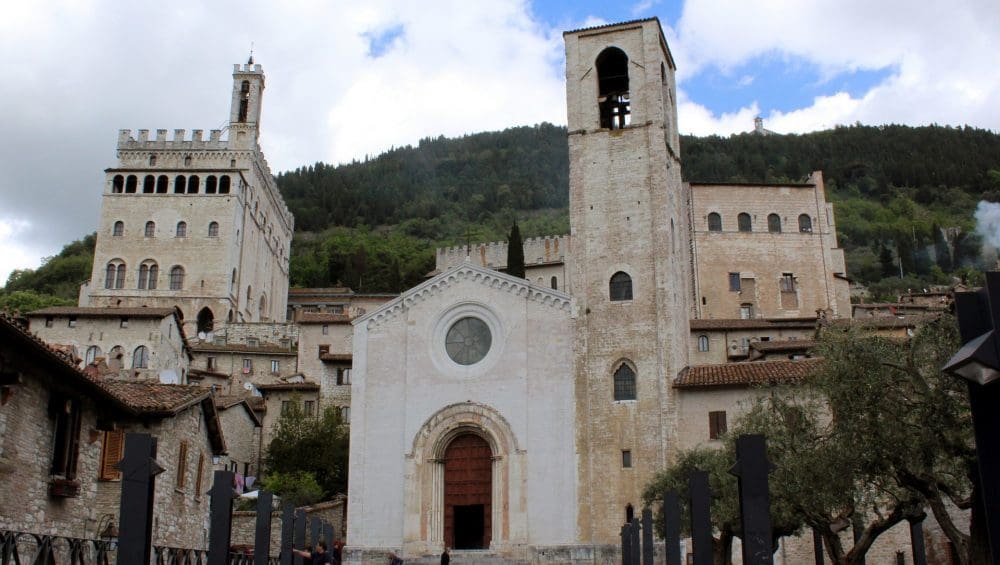
From stone to sea
From stone to sea
The beating heart of the city and the protagonist of any visit is the scenic and panoramic Piazza Grande, an extraordinary example of a “suspended square”, supported by the arches that can be admired in the lower part of Gubbio, from which you can enjoy a splendid view of the valley.
The square is home to Palazzo dei Consoli, the symbol of the city, built in Gothic style to testify to the importance of Gubbio in the medieval era. Inside Palazzo dei Consoli is the Gubbio civic museum, with the “campanone” and the seven “Eugubine Tables”, the most important document for the history of the Italic peoples, dating back to between the 3rd and 2nd centuries BC. Palazzo dei Consoli also has a curious historical record: it is the first Italian building to have had running water, pipes and toilets.
In the lower part of the town is Piazza Quaranta Martiri, a market area in the Middle Ages. On the south side is the church of San Francesco, to which the episode of San Francesco and the wolf is linked. According to the story, when he arrived in Gubbio, San Francesco found the city deserted because the inhabitants were afraid of a ferocious wolf. San Francesco went into the forest and made a pact with the animal that the wolf would no longer attack the men, who would instead feed and care for him. The stone on which the pact was signed and the stone of the tomb where the wolf was later buried are still visible in this church. In the highest part of the city, at 908 meters above sea level, on Mount Ingino, you can admire the Basilica of Sant’Ubaldo which houses the remains of the saint and the famous candles. It is worth climbing on foot or by cable car. The little cable car adventure is recommended: you go up for about 500 meters suspended in the void in a small “cage” that can fit a maximum of 2 people, with a breathtaking panoramic view of the roofs of Gubbio and the surrounding countryside.
The municipality of Scheggia and Pascelupo is a mountainous territory of about 64 km², which occupies the north-eastern portion of Umbria, on the border with the Marche, and is the only Umbrian municipality located entirely on the Adriatic side of the Apennine chain. Immersed in the heart of the Umbrian-Marche Apennines, it occupies a vast area of the Monte Cucco park. Woods, rocky walls, ravines, and springs of clear water are frequent.
The area, in addition to a notable variety of plants such as beech, holm oak, and downy oak, is also home to animal species at risk of extinction, such as the Apennine wolf, the golden eagle, and the otter. Nearby are Mount Catria (1701 m), Mount Cucco (1566 m), Mount Motette (1331 m), Mount Le Gronde (1373 m), the Rio Freddo gorge and the Valle delle Prigioni.
The Sentino river, with its course along the valley of the same name, crosses the territory of the municipality, but there are numerous other watercourses, among which the Rio Freddo (coming from the Monte Cucco massif), the Artino River and the Fosso della Gorga (which
come from the Monte Catria group), the Fosso della Pezza (from Monte Tino), the Fosso di Campitello or Bulgarello, and the Sanbucara ditch (coming from Monte Motette) and the Fosso la Foce (from Monte Orneti) stand out for their importance in terms of flow.
There are also numerous springs and sources of fresh water throughout the surrounding mountainous territory, including the Fontanelle source (783 m), S. Giglio spring, Campora spring and Peschi spring along the slopes of Mount Motette, Lorno spring (877 m), Bregna spring (830 m) along Mount Foria and Tino spring on the esplanades of Mount Forcello.
The Scheggia mountain is Mount Calvary (949 m above sea level) on which the sanctuary of Mount Calvary is located. Its name derives from the Latin calles oviariae or “sheep paths”, in fact the mountain is
the access route to the pastures of Mount Cucco. Its origins date back to the end of the first millennium AD and are closely linked to the history of the Camaldolese congregation. The hermitage was probably founded by Saint Romuald in 980. The abbey was greatly boosted by the work of Saint Pier Damiani, who became a monk here in 1035 and Prior from 1043, not only for the expansion of the original buildings but also for a strong cultural and spiritual development that made the hermitage a religious and social reference point.
Tradition reports the number of 76 saints and blesseds who lived in the hermitage. The Hermitage is mentioned in the Divine Comedy (Paradise, canto XXI) by Dante Alighieri, who seems to have also been a guest there. The square in front of the basilica; on the left the entrance to the cloister and on the right the scriptorium. Built as an abbey in 1325, Fonte Avellana became a socio-economic power and, shortly thereafter (year 1392), it became acquainted with the practice of commenda (14th – 15th century). In 1569, Pope Pius V Ghilslieri suppressed the autonomous Avellanite congregation that had governed the monastery until then, passing it to the Camaldolese congregation. Not even forty years later, in 1610, it passed to the Camaldolese cenobitic congregation of San Michele di Murano, only to return to the Camaldolese congregation at the beginning of the twentieth century. Fonte Avellana remained “commended” until almost the end of the 18th century, and even if it had commendants such as Cardinal Giuliano della Rovere (later Julius II), who left signs of a building nature and embellishments worthy of note, it nevertheless deeply felt the inevitable conditioning, which is why the decline of its monastic life was inexorable, even if slow.
This decline ended with the Napoleonic suppression of 1810 and shortly thereafter the Italian one of 1866. Having returned under the management of the Camaldolese monks in 1935, today Fonte Avellana has rediscovered its ancient splendor, both spiritual and architectural.
The choir of the Basilica of the Monastery of Fonte Avellana On 5 September 1982 Pope John Paul II visited Fonte Avellana on the occasion of the celebrations for the millennium of the foundation of the Hermitage. In March of the same year the Pope elevated the abbey church to the dignity of a minor basilica. Since 2007, the monastery’s Botanical Garden, which has always been reserved for monks, has also been open to the public.
The territory of the Municipality of Frontone has been inhabited since ancient times; the first population to create a stable settlement was certainly the Umbrians and later the Celts arrived first and then the Romans, then the area was conquered by the Lombards who were then replaced by the Franks. The first written documents that speak of the castle and the civil community of Frontone date back to the eleventh century, and its history, until the end of the fourteenth century, was inextricably linked to that of Cagli, to which it belonged as a fief. It then became a possession of Gubbio under the rule of the Gabrielli family until 1420 and then passed to the Duchy of Urbino, except for a very brief Malatesta domination. In 1530 the castle and the territory of Frontone became a county of the Duchy of Urbino, a gift from Francesco Maria I Della Rovere to the Modena nobleman Gianmaria Della Porta and remained so until the abolition of feudal jurisdictions following the annexation to the Napoleonic Kingdom of Italy (1808), an abolition later renewed by Pope Pius VII (1816).
Ask for information
Gallery
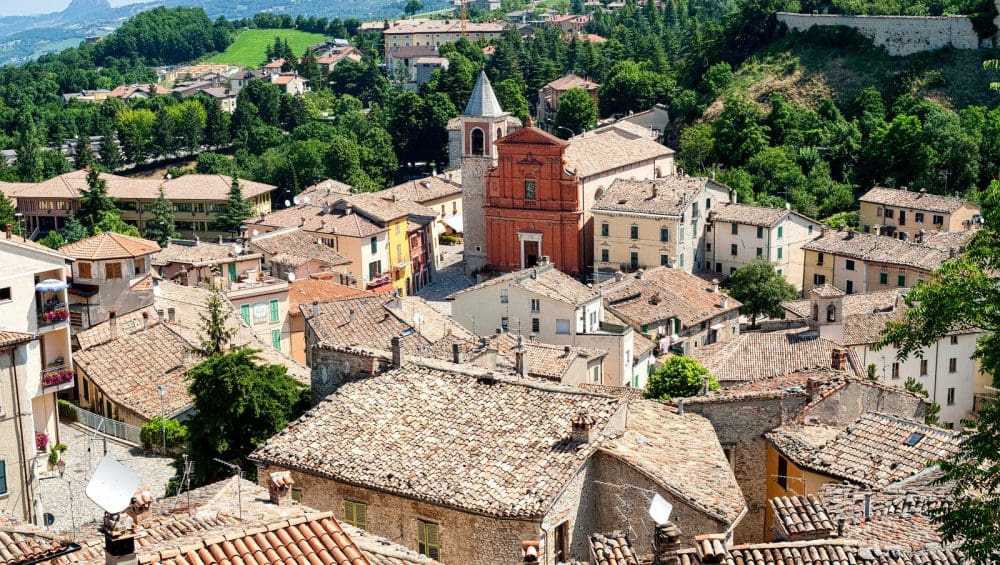
Renaissance itinerary between Umbria and Marche in the footsteps of the Montefeltro family
Renaissance itinerary between Umbria and Marche in the footsteps of the Montefeltro family
This itinerary will take us through some of the most fascinating cities of Umbria and Marche, following the trail of the Montefeltro and the Renaissance. Each stop offers a unique opportunity to immerse yourself in the history, art and culture of one of the most fascinating eras in Italy.
The first stop on our journey is GUBBIO, one of the oldest cities in Umbria. In Piazza Grande stands the Palazzo dei Consoli, an extraordinary example of Gothic architecture that houses the Civic Museum. It will be possible to admire the collection of art and historical artefacts, including the Eugubine Tablets. Not far away is the Palazzo Ducale, a unique example of Renaissance architecture, commissioned by Federico da Montefeltro around 1476 as a residence for the family, following the illustrious example of the one in Urbino. The interior preserves some original furnishings and an extraordinary replica of Federico’s study, covered in inlaid wooden panels based on designs by Francesco di Giorgio. Don’t miss a walk along the medieval streets of Gubbio, breathing in the unique atmosphere of this city, or a cable car ride up Colle Eletto to admire a breathtaking view and visit the Basilica of Sant’Ubaldo.
The route continues towards URBINO, the birthplace of Raffaello Sanzio and the cradle of the Italian Renaissance. Perched on the hills of the Metauro Valley, the city appears from afar with its Palazzo Ducale, built by Duke Federico da Montefeltro, a Renaissance masterpiece. Inside, it houses the Galleria Nazionale delle Marche, which houses works by Piero della Francesca, Titian and, of course, Raffaello. Duke Federico’s study, inside the Palace, houses a valuable coffered ceiling and is covered in the lower band with inlaid wood by Baccio Pontelli based on designs by Sandro Botticelli, Francesco di Giorgio Martini and Donato Bramante.
Heading towards the coast, a stop is a must at GRADARA. A border village a few steps from Romagna, immersed in the hills but close to the sea, it is a space frozen in another time. The village has always been identified with its fortress that for centuries has defended noble and famous dynasties such as the Malatesta, the Sforza and the Borgia. Also mentioned by Dante in the Divine Comedy for the tragic love of Paolo and Francesca.
The itinerary ends in PESARO, on the Adriatic coast. Italian Capital of Culture in 2024, UNESCO Creative City for Music and City of the Bicycle. Among the places to visit in the city there is certainly the Palazzo Ducale, a splendid Renaissance residence built by the Dukes of Urbino, which stands majestically on the square. Birthplace of Gioacchino Rossini, there are many places that recall the illustrious character such as his house or the Theater named after him. You cannot miss the Villa Imperiale, located on the hills overlooking Pesaro. This Renaissance residence, immersed in a lush park, is one of the most beautiful in Italy.
The city boasts a long golden sandy beach, perfect for relaxing under the sun. The seafront is lined with palm trees and offers a splendid view of the Adriatic Sea. We suggest taking a walk, renting a bike or simply enjoying the sea and the sun.
Ask for information
Gallery
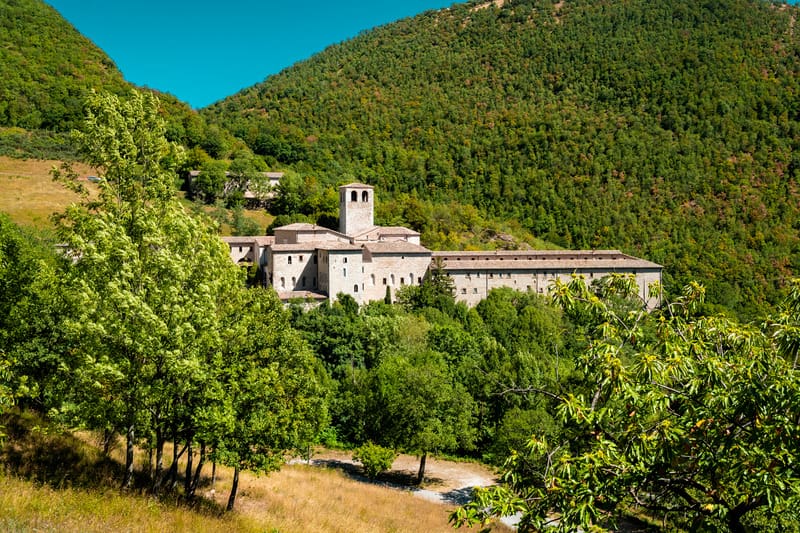
Tour of the Abbeys between Umbria and Marche: an itinerary in the places of silence and prayer
Tour of the Abbeys between Umbria and Marche: an itinerary in the places of silence and prayer
This territory has always been a land in between, extremely important from a historical and cultural point of view because it is a crossroads of peoples and traditions, to bind – over time – the various cultures was religion, which, through churches, convents, abbeys, hermitages, has formed and influenced several generations.
Starting from the territory of the Marche, the first stop on our itinerary is the church of Sant’Ansovino di Avacelli which is located in the territory of ARCEVIA, along the road that leads to Serra San Quirico. Built around the 11th century, it is one of the churches that probably belonged to the Order of the Templars, around it there are many legends linked to the charm and the many secrets that the Knights hid, one of these speaks of an ancient treasure hidden right in the vicinity of the church. A curious story is told by a custodian who in the 17th century, while searching for this ancient wealth, split in half the processional cross with six spheres – symbol of the Knights Templar – located on the facade. Apparently, he found no gold but a terracotta pine cone.
The second stop on the tour takes you to the Abbey of San Vittore delle Chiuse, in the territory of GENGA, one of the most beautiful and important Romanesque buildings in the Marche. The church, built in the birthplace of San Benedetto, to whom it was originally dedicated, was constructed by the Lombards towards the end of the 20th century. Much of the charm of this large building is due to its splendid and scenic location, in the GOLA DI FRASASSI where the mountains create a sort of suggestive amphitheater. Sober and imposing, it has a structure in large white stone blocks, the lack of decorations – in perfect accordance with the artistic canons of the time and with the dictates of faith – gives the visitor an atmosphere of purity and essentiality. A mysterious detail has always attracted the attention of scholars and the curious who have wondered about the meaning of the symbol of the inverted Infinity that is found near the left door of the altar.
Another important example of the Marche Romanesque is represented by the nearby Abbey of Santa Croce in SASSOFERRATO, in the territory of Fabriano, which is located on a small hill surrounded by a fascinating impervious nature. Its construction is particular and fascinating, within the walls of an already existing church built in all probability by the Knights Templar of which various symbols are recognized carved on columns and capitals. The Templar mysteries are not the only ones to arouse curiosity, in fact on the upper floor you can see some symbols that recall the god Mytra, a pagan divinity to whom the ancient original temple was probably dedicated.
The destination of the fourth stage is the Abbey of Sant’Emiliano in CONGIUNTOLI, which, dedicated to the martyr of Numidia, Emiliano, is located on the junction – hence the name in Congiuntoli – of two waterways, the Esino and the Rio Freddo. Although it is located in the province of Perugia, the ancient construction in Romanesque-Gothic style is territorially part – historically and artistically – of this extraordinary border area of the Marca di Ancona. It is a monumental Benedictine abbey with a severe and imposing appearance that includes the monastery and the church and which most likely belonged to the Templar Order which, right on the Rio Freddo, had a historically confirmed headquarters. The loss of the monastery archive does not allow for precise dating or information, what is certain is that it was very important and owned several properties sold in 1860 when the royal commissioner of Umbria suppressed the monastery.
Before leaving the Marche and heading towards Umbria, we will stop at the majestic Monastery or hermitage of the Holy Cross of FONTE AVELLANA, near Serra Sant’Abbondio. Built on the slopes of Mount Catria around the year 1000 as a place of spiritual retreat for monks who wanted pure contact with God, immersing themselves in the silence of nature, it is still an oasis of peace where nature embraces and protects the structure and where many go to pray and meditate. The San Pier Damiani scriptorium is precious, the only one in the Marche that has never been restored and is therefore completely original, where the copyist monks studied and copied the ancient texts.
Returning to Umbria, near DI SCHEGGIA E PASCELUPO, there is the Abbey of Santa Maria di Sitria, located at the foot of Mount Nocria (867 meters), in the narrow valley of the Artino stream, inside the Monte Cucco Park. The hermitage was built by San Romualdo in 1014 while between 1018 and 1021 he founded the monastery there. The church of Sitria is composed of a single nave separated, in the Benedictine manner, from the presbytery by a stone staircase of 8 steps. It has Romanesque-Gothic lines, has a stone ogival vault roof and an altar embellished with three-lobed arches, supported by 13 small columns, most of which were stolen in the sixties and rebuilt. In the apse basin there is a fresco dating back to the 18th century, depicting the Crucifixion, by an unknown artist. The crypt below, which is accessed through an entrance in the center of the staircase, is very elegant and has a vault supported by a granite column with a capital, almost certainly from a Roman building. In the basement of the church, the so-called prison of San Romualdo is indicated, the narrow cell in which the Saint was locked up for six months by his monks.
The last stop on our itinerary that ends in Umbria, is near UMBERTIDE, the Abbey of Montecorona is an imposing Benedictine complex founded in the 12th century. Immersed in a thick forest, the abbey is famous for its Romanesque crypt, an evocative and mysterious environment. The visit offers the opportunity to immerse yourself in medieval history and appreciate sacred art in a natural context of rare beauty.
Ask for information

The Way of Francis from the north by foot
The Way of Francis from the north by foot
Starting from Euro 799,00 per person
1st day
ASSISI – SANCTUARY OF VERNA – PIEVE SANTO STEFANO (about 15 km – AVERAGE 5 HOURS)
Arrival in Assisi independently in the morning.
Our suggestion is to leave the car and find it again on the last day.
Transfer with one of our drivers towards the Sanctuary of La Verna. From here you start the walk in the direction of Pieve Santo Stefano.
Accommodation in the facility, dinner and overnight stay
2nd day
CITERNA – CITTA DI CASTELLO (about 20 km – MEDIUM – 7 HOURS)
In the morning after breakfast, transfer with one of our drivers from the Pieve Santo Stefano structure to the starting point of Citerna.
From here the path leads us to Città di Castello.
Accommodation in the facility, dinner and overnight stay
3rd day
PIETRALUNGA – GUBBIO (about 26 km – MEDIUM – 8 HOURS)
In the morning after breakfast, transfer with one of our drivers from the Città di Castello structure to the starting point in Pietralunga.
From here the path continues up to Gubbio
Accommodation in the facility, dinner and overnight stay
4th day
GUBBIO – VALFABBRICA (about 30 km – MEDIUM/DIFFICULT – 8 HOURS)
In the morning sightseeing tour of the city with the Gubbio Express
Continuation towards Valfabbrica
Accommodation in the facility, dinner and overnight stay
5th day – VALFABBRICA – ASSISI (about 15 km – EASY – 5 HOURS)
After breakfast we leave for the last journey of the journey which will lead to our destination: Assisi.
Accommodation in the facility, dinner and overnight stay
6th day – ASSISI
Morning dedicated to the discovery of Assisi
Notes
Every evening of the itinerary, overnight accommodation is provided in facilities such as the Pilgrim’s Refectory of the Santuario de La Verna, 3/2 star hotels, farmhouses and guest houses, along the route of Via di Francesco who have availability therefore guaranteeing overnight stay and dinner in the structure every night.
As regards the two trips that we normally feel like suggesting by car between Pieve Santo Stefano – Citerna and between Città di Castello – Pietralunga, they are included because the route, according to the many who have traveled the route is demanding and above all because it would force them to add two further overnight stays.
Our best offer is starting from €799.00 per person
The rate is per person and includes:
- 5 nights accommodation in a double room with half board (drinks included)
- Transfer services from Assisi to La Verna, from Pieve Santo Stefano to Citerna, from Città di Castello to Pietralunga
- Gubbio Express
- Pilgrim’s Credential
- Europ Assistance insurance
The rate does not include:
- Extras, tips and offers
- Lunches
- Luggage transport with the exception of the stages served by private transfer
- Means of transport
- City tax where introduced by the relevant municipality
- Anything not expressly indicated in the item “the rate includes”
Ask for information
Gallery
Commenti recenti
- A Taste of Umbria 5
- Accomodations 106
- Activity 9
- Attività 3
- Blog 41
- Christmas in Umbria 2
- Consigli 10
- Culture 10
- Events in Umbria 1
- Experiences 16
- La Contessa: a door between land and sea 36
- Mystic Umbria 5
- News 10
- Olive oil experiences 1
- Outdoor 3
- Packages 29
- Recipe 8
- Taste 3
- Tips 16
- Umbria A Journey through Time 10
- Umbria Beactive 12
- Umbria For Family 7
-
Christmasland Gubbio Natale 2025 13 November 2025
-
Chocolate lessons 28 October 2025
-
Foliage in Umbria 27 October 2025

